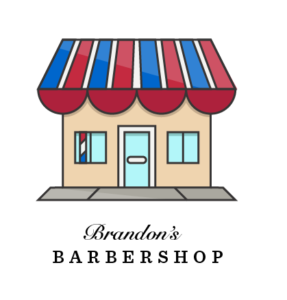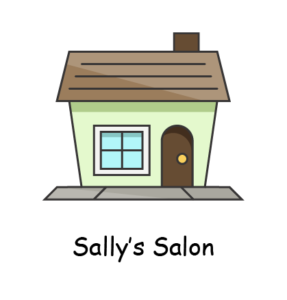In last week’s article, we took a look at what a brand position is, as well as why it’s important to a business. You can read it in depth here, but we’ll touch on a few key points as we tackle how to discover your brand position.
- A brand is the feeling or promise associated with a company or product. Every company has a brand, but not every company is aware of it.
- A brand position is what differentiates you from your competitors. You need to control your brand to control your position.
- Branding is not reserved for large companies. Small businesses can greatly benefit from investing time and resources into developing a good brand.
If you have a good grasp on what branding is, then you’re ready to move onto a brand position. We’ve determined it’s relevant for any size business, but how do you go about finding yours? We’ll look at a hypothetical case study, and then derive from that a few tips for discovering your brand position.
Brand Position Case Study
Let’s start with two companies; Brandon’s Barber Shop and Sally’s Salon. They are both located on the main street of a small town, and offer the same services. Through and through, these two businesses are competitors. The primary difference is in their branding. Brandon has spent time and resources into directing his brand where he wants it. Sally doesn’t worry about her brand because she doesn’t think she has one.


A Well-Branded Company
Brandon decided early on that he wants his barber shop to be more than a place where you get your haircut. It’s a community, a social spot, where people know each other and care about each other. So he’s selling more than a good haircut, he’s selling an experience. Brandon is very selective in hiring stylists, because they have to match his brand. All of his workers are incredibly friendly, invest in his customers, and care about delivering the best experience.
At Brandon’s Barber Shop, the interior has been decorated with the customer in mind. Brandon sprung for the comfiest salon chairs, inviting mood lighting and decor, and there’s always pleasant music floating in the background. His customers walk out of there more relaxed and happy than when they came in, and they always have a confidence boost from the haircut they received.
A Poorly-Branded Company
Down the street, Sally has bought into the idea that branding is only for the big companies. She would never consider investing in it, because she doesn’t think she’ll see any return on it. Sally sells haircuts, nothing more. The staff couldn’t name all the customers, only the really faithful ones. But if people are happy with a good haircut, she figured they’ll come back.
Sally’s Salon is decently clean, depending who’s working at the time. Some workers are better than others, but they all get the job done, so she’s happy with that. There’s nothing really coherent about the decorating, but she figured people don’t come to a salon for the decor, but for the service. She makes her purchasing decisions based on the most cost effective deals. Her customers get a new haircut and she gets a profit.
It’s important to note that Sally’s approach isn’t wrong, if she doesn’t care about her brand. It doesn’t mean she won’t stay in business, or can’t turn a profit. But since Brandon’s Barber Shop is right down the street, Sally’s Salon may steadily loose customers to them. That’s because Brandon has better positioned his brand.
The Effects Of A Brand Position
Having a good brand increases your chances of your customers becoming brand advocates. Both businesses offer the same service, at a similar level of quality. The differing factor will be how their customers feel about them, i.e. their brand. Let’s say a customer has visited both places, as well as a few other local salons. A friend of theirs is looking to get a haircut. The customer will start to compile a list in his head of all the places he’s gotten a haircut. Brandon and Sally’s business will be on that list. But as the places start to order themselves in his mind, Brandon’s shop will jump to the top of the list. When he went in there, he got a haircut, but he also really enjoyed his time there. He couldn’t peg why, but something about that place sticks out in his mind. It’s the first place he gives a referral for.
Keeping Pace With Your Competitors
That’s the power of a good brand and effective brand positioning. Brandon’s shop has superseded his competitor’s because of his brand. If Sally doesn’t want to lose customers to him, she should start to think about what makes her the better choice amongst the salons. It could be that she charges less, so she can appeal to people on a budget. She’ll get the customers that can’t afford Brandon’s services, or that don’t care about the experience of a barber shop and just want a decent haircut.
Or she could rebrand Sally’s Salon. She might note that her competitors don’t offer spa services, and a lot of the customers she serves also go to spas. So she could position her salon as an oasis for people who want to be pampered.
RELATED POST: When Is It Time For A Rebrand?
Investing in her brand will allow Sally to control the perception of her salon. She can better market towards people that would be interested in her desired brand, (which is called her target audience.) In the end, this is actually cost effective, because she won’t be spending money on customers that would better fit Brandon’s shop. She’ll also be more likely to turn her customers into brand advocates, which is the most successful way to market a company.
How To Find Your Brand Position
Let’s zoom out of this scenario and focus in on your business. Perhaps you find yourself in Sally’s shoes; having a brand but not caring or not recognizing it. What can you do to take charge of your brand and make it work for you?
The first step is verbalizing your brand.
You have one, but you need to discover what it is. This can be done by looking over your reviews, asking clients to fill out surveys, or hiring a brand strategist to guide you in discovering it. Remember, it’s not the service or product you offer, but it’s how people feel about your business. If you’re a lawn care service, do your customers often tell you how happy they are with the quality of your care? If you own a restaurant, do people say how they always feel welcome and they can’t wait to come back? Try to associate some adjectives with your company, and be as honest as possible.
If you have neglected your brand, you might have some negative adjectives. Are you unreliable? Do you take too long to reply to clients? Has some people gotten sick from your food? Identifying the negatives are more important for a brand, because then you can fix them so they stop harming your business.
The second step is finding your competition.
They might be next door, they might be across the ocean. But every business has competition. And in order to position your brand, you need to know who you’re playing against. If you’ve been in business for a little while, your competition probably jumps to mind. It could be the cafe down the street, or it could be the startup that’s vying for the same funding as you.
Once you’ve narrowed down your competition, try to identify their brands. See how your brand lines up. Are they clearly pouring effort into reinforcing their brand? You’ll have to step up your brand to level the playing field. The company with the better brand already pulls ahead in competition.
The third step is discovering your defining factor.
What makes you different from your competitors? You’re not going to worry about businesses that are out of your industry, or don’t reach the same people you do. When someone is looking to hire a law firm, why would they pick one over the other?
If all of them have affordable prices, you can differentiate yourself by being the premium service. If they have the best quality, you can have the best customer service. Perhaps your portfolio is the most important; you’ve had more notable clients and people want to work with well-known firms. You have to identify your brand position before you can instill it in people’s minds.
Conclusion
These three steps work together to bring you to your brand position. Once you’ve established a position, you can start to target your marketing efforts to reinforce that position in the public’s eye. You might also find that your current visual identity, (your logo, colors, fonts, supporting graphics,) doesn’t match your position.
For example, you position your company as a premium service, but your logo doesn’t scream “professional,” then it’s working against your brand position. You want all your company’s assets, from graphics to staff to public relations, to align with your brand and position. Taking all these steps will result in a brand position that elevates and enhances your company, helping your business grow to the next level.

